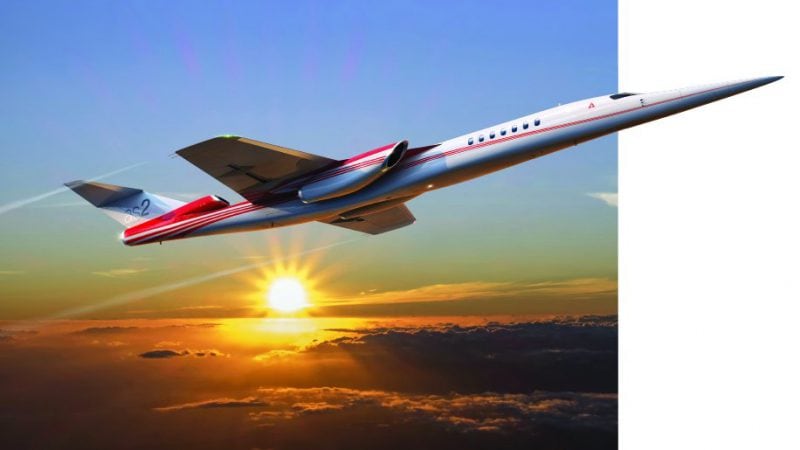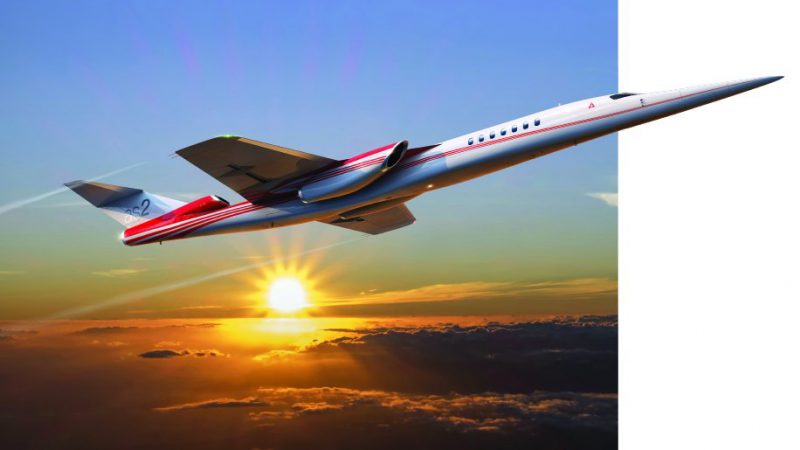Supersonic Comeback
Lessons learned from Concorde are making faster-than-sound more workable this time around
April 29, 2019


In January, Boom Supersonic announced it closed its latest funding, a $100 million Series B investment round, bringing total funding to over $141 million. The move brings the company one step closer to its aim of producing “the world’s first economically viable supersonic airliner.” Supersonic is defined as greater than Mach 1, the speed of sound. Hypersonic is generally used to describe speeds exceeding Mach 5.
Of course, the key words here are not “supersonic” or “hypersonic,” but rather “economically viable.” Strictly speaking, technology is not the stumbling block to faster-than-sound travel, and hasn’t been since 1947, when aviation pioneer Chuck Yeager became the first person to push through the sound barrier. Ever since then, the commercial aviation industry has been in a race to take passengers past Mach 1.
The dream was realized – at least for a while – when, in January 1976, the Concorde flew the first supersonic passenger service between New York and London. The result of a 15-year collaboration between the British and French aeronautics industries, the sleek four-engine delta wing aircraft covered the route at more than twice the speed of sound.
Concorde brought a new dimension of glamour and speed to aviation. But the supersonic age was to last less than three short decades. By 2003, as high fuel costs and the operational limitations imposed by the aircraft’s telltale trail of sonic booms ate into the Concorde’s utility, Air France and British Airways – the only two carriers regularly operating supersonic flights commercially – pulled the plug.
Today the remaining Concordes are museum pieces, but the dream lives on. Boom Supersonic is just one of the contenders currently pursuing the goal of returning supersonic flights to the skies. The company says it has pre-orders for 30 of its Overture aircraft from customers including Japan Airlines and the Virgin Group, with plans for the airliner to enter service in the mid-2020s. The company also claims the economics of the aircraft will allow airlines to price tickets at little more than a business class fare.
Another is supersonic jet company Aerion Corporation which recently got a boost with “a significant investment” by aerospace giant Boeing to develop the AS2, a business jet capable of traveling at speeds of up to Mach 1.4 (approximately 1,000 miles per hour). Boeing says its support will provide engineering, manufacturing and flight test resources, as well as “strategic vertical content” to bring the AS2 to market.
The proposed supersonic business jet would carry 12 passengers and could trim flight times between New York and London by three hours, enabling round trips between the two financial centers to be completed in a single day. The design also anticipates long-haul capabilities, for example from Los Angeles to Paris, according to a press release.
Boon or Boom?
Much of Concorde’s lack of commercial success can be traced to one feature inherent in supersonic flight: The Boom. Any aircraft flying through the air pushes air molecules out in a series of pressure waves that move in all directions at the speed of sound. At subsonic speeds, this is not a problem. But when the aircraft exceeds the speed of sound, it outruns these waves, compressing them together into a sonic boom – an explosive sound that travels with the aircraft’s flight path.
Concorde’s design created a boom of 105 decibels, meaning its flight paths could only be over open ocean. Over land, the boom was too disruptive eliminating some of the most lucrative long-haul routes such as across the continental United States.
However with the return of supersonic air travel increasingly likely, and with multiple companies in a race to produce the aircraft, countries like the US are looking to relax restrictions on where and when they can fly. Aircraft designers are also keen on finding solutions that minimize the effects of the boom.
Lockheed Martin has a contract with NASA to build a low-boom flight demonstration aircraft that could generate a sound about as loud as a car door closing. Other solutions include airframe designs that redirect the majority of the sound wave upwards from the flight path, and a technique to disperse the sound energy in a series of less disruptive ‘boomlets.’
Aerion says its A2S could reach its Mach 1.4 cruising speed over water and up to Mach 1.2 over land without causing a sonic boom that would reach the ground, according to the company. Boom also claims that “at landing and takeoff, Overture will be as quiet as the subsonic aircraft flying similar routes today.” A third supersonic player, Spike Aerospace, says its jets will not create a supersonic boom at all, though only vaguely details how it will achieve that.
Nonetheless, just as with the first generation of these high-speed aircraft, concerns still abound about their disruptive potential. According to a paper from the International Council on Clean Transportation, busy international airports such as Dubai and Heathrow may see flights creating 300 sonic booms per day by 2035. The report goes on to state that areas around airports exposed to noise pollution would double and “substantial parts of the world” could face quality of life issues from the noise.
The ICCT study modeled landing and take-off noise, sonic boom and CO2 emissions based on a network of 2,000 supersonic planes. That would represent around 5,000 flights a day in Europe, North America, the Middle East, Asia and Oceania. The ICCT highlighted Dubai and London Heathrow as potentially seeing more than 300 operations per day, and Los Angeles, Singapore, San Francisco, New York-JFK, Frankfurt, and Bangkok seeing 100 to 200, meaning a boom every five minutes over a 16-hour flight day.
In addition, the report also warned the aircraft would emit an average 96 million metric tons of CO2 per year, roughly the combined emissions of American, Delta, and Southwest Airlines in 2017, and an additional 1.6 to 2.4 gigatons of CO2 over their 25-year lifetime.
However, it pays to remember this new generation of faster-than-sound aircraft is not being designed in an information vacuum. Designers and engineers know a great deal more about the environmental issues, the economics, sustainability and noise concerns than did their predecessors in the supersonic field who first designed Concorde. Boom Supersonic, Aerion Supersonic and Spike Aerospace are some of the companies working on these aircraft, and they will all be paying close attention to what the marketplace and the flying public are telling them.




